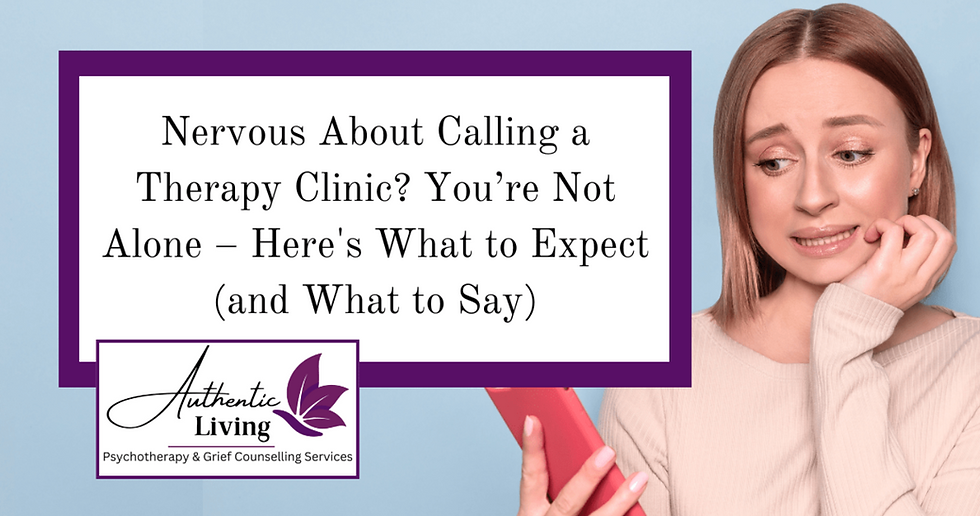Understanding Attachment Styles: How They Develop and Impact Your Relationships
- Aug 13
- 4 min read
Attachment styles shape how we relate to others, form relationships, and respond to closeness or distance. Developed early in life through interactions with caregivers, these patterns often continue into adulthood and influence romantic relationships, friendships, and even work dynamics. Understanding your attachment style can help you improve relationships, manage emotions, and grow personally.

How Attachment Styles Develop
Attachment theory was first developed by John Bowlby and later expanded by Mary Ainsworth. It suggests that our early experiences with primary caregivers, usually parents, form a blueprint for how we expect relationships to work.
Secure attachment: Children whose caregivers are consistently responsive, reliable, and emotionally available tend to develop secure attachment. They learn that their needs will be met and that relationships are safe.
Anxious attachment: Children whose caregivers are inconsistent or unpredictable may develop anxious attachment. They often worry about whether their needs will be met and may become clingy or highly sensitive to rejection.
Avoidant attachment: Children whose caregivers are emotionally unavailable or dismissive may develop avoidant attachment. They learn to rely on themselves and distance themselves from emotional closeness.
Disorganized attachment: Children exposed to trauma, abuse, or frightening behaviors from caregivers may develop disorganized attachment. This style combines elements of anxious and avoidant attachment and can lead to confusion, fear, and mistrust in relationships.
Attachment styles are not set in stone; life experiences, supportive relationships, and therapy can help shift patterns toward greater security.
Strengths and Weaknesses of Each Attachment Style
Secure Attachment
Strengths:
Comfortable with intimacy and independence
Trusting and empathetic toward others
Healthy emotional regulation
Weaknesses:
May struggle with overextending in relationships if overly accommodating
Can sometimes be vulnerable to disappointment when others are insecure
Anxious Attachment
Strengths:
Highly empathetic and sensitive to others’ emotions
Motivated to build connection and intimacy
Strong relational awareness
Weaknesses:
Fear of abandonment can lead to clinginess or jealousy
Difficulty trusting partners or friends fully
Emotional highs and lows may be intense
Avoidant Attachment
Strengths:
Highly independent and self-sufficient
Comfortable with personal space and boundaries
Resilient in challenging situations
Weaknesses:
Difficulty expressing emotions and vulnerability
May avoid intimacy or push people away
Can struggle with long-term closeness
Disorganized Attachment
Strengths:
High sensitivity to relationships and emotions
Strong insight into trauma and interpersonal dynamics (with support)
Can develop resilience through therapy and self-awareness
Weaknesses:
Fear and confusion about closeness
Push-pull dynamic in relationships
Difficulty trusting self and others
How Therapy Can Help
Therapy provides a safe environment to explore your attachment patterns, understand their origins, and develop healthier ways of relating.
Common approaches include:

Attachment-focused therapy: Helps identify early experiences shaping attachment and rebuilds a sense of security.
Cognitive-behavioral therapy (CBT): Addresses patterns of thought and behavior tied to attachment anxiety or avoidance.
Emotion-focused therapy (EFT): Teaches recognition, regulation, and healthy expression of emotions.
Somatic therapy: Helps process attachment-related trauma stored in the body.
Therapists can help clients:
Recognize triggers linked to attachment fears
Learn healthy boundaries and communication skills
Increase emotional regulation and self-soothing techniques
Build secure relational patterns with themselves and others
With consistent therapeutic support, individuals with anxious, avoidant, or disorganized attachment styles can move toward greater security and healthier, more fulfilling relationships.
Practical Steps for Growing Toward Secure Attachment
How to Help Yourself If You Have an Attachment Style That Isn’t Secure
If you discover that your attachment style is anxious, avoidant, or disorganized, it can feel discouraging at first — but it’s important to remember that attachment patterns are not fixed. With awareness, effort, and support, you can move toward a more secure style. Here are some ways to help yourself:
1. Learn about your attachment style: Understanding your patterns is the first step toward change. Read books, listen to podcasts, or take reputable online quizzes to learn how your style shows up in relationships. This awareness can help you notice when you’re reacting from old patterns instead of your present needs.
2. Practice self-reflection: Keep a journal of your thoughts, feelings, and reactions in relationships. Pay attention to triggers, moments when you feel rejected or smothered, and how you respond. Over time, you’ll begin to spot unhelpful cycles and have more control over your responses.
3. Build emotional regulation skills: If you have an anxious style, this might mean learning ways to soothe yourself when you feel abandoned. If you’re avoidant, it could mean practicing staying present when emotions run high. Mindfulness, breathing exercises, and grounding techniques can help.
4. Communicate openly in relationships: Share your needs with trusted friends or partners. Practice asking for reassurance without guilt, or expressing when you need space without pushing people away. Clear communication builds trust and makes it easier to form healthier bonds.
5. Seek secure role models: Spend time with people who demonstrate secure attachment. Notice how they set boundaries, manage conflict, and express care. Their behavior can model healthier patterns for you.
6. Work with a therapist: Therapy can be a safe place to explore early relationship experiences, understand how they shaped your style, and practice new ways of connecting.
At Authentic Living London, we support clients in moving toward secure attachment by helping them feel safe, understood, and empowered in their relationships.
Want to learn more about attachment style?
Book a free 15 minute consultation today: CLICK HERE










Comments